Volume 22, Issue 2
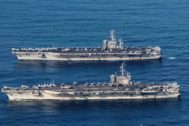
Regional Overview
May — August 2020An “Alliance of Democracies”: Is There Any There There?
As the region (and world) focus on the fight against the global COVID-19 pandemic, the “cold peace” between Washington and Beijing continued to heat up, with implications throughout and beyond the Indo-Asia-Pacific region. US pronouncements during the last four months should dispel any doubt that the US Asia strategy is aimed first and foremost at China, and more specifically at the Chinese Communist Party (CCP). While critics of the Trump administration’s unilateralist approach continue to argue that “America First means America Alone,” this does not appear to be the case where China is concerned. Not only does the much-maligned (including by us) “Quad”—the loose grouping of the US, Australia, India, and Japan—show signs of coordinated backbone, it seems to be forming the basis for a new “Quad-Plus” that includes other “like-minded states.” The Quad’s focus on the promotion of the rule of law and freedom of navigation has Beijing’s attention, as does Secretary of State Mike Pompeo’s recent comment that “(M)aybe it’s time for a new grouping of like-minded nations … a new alliance of democracies.”
Meanwhile, the COVID-19 pandemic continues to hammer regional economies and the recovery, if and when it occurs, is likely to be long and uneven. It looks like there may be a new model that describes its impact, and it doesn’t augur well for those countries. Finally, we offer some framing thoughts for a potential Biden foreign policy as the US presidential campaign enters the homestretch.
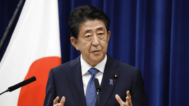
US - Japan
May — August 2020Unexpected Turbulence for the Alliance
Several unexpected events during the summer of 2020 confounded US-Japan ties. The COVID-19 pandemic continued to challenge governments in Tokyo and Washington, as the number of infected grew. The scale of the pandemic’s impact was far greater in the United States, with new cases climbing in southern and western states. Japan’s metropolitan centers faced an uptick in cases, but so too did less populated regions. The mortality rate of the United States hovered at 3%, a far more worrisome indicator that the pandemic was far from contained. In contrast, Japan continued to have a relatively low mortality rate of 1.9%.
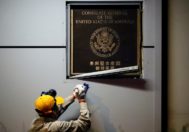
US - China
May — August 2020US-China Relations in Free Fall
President Trump blamed China for the spread of the coronavirus, which opened the door to tougher US policies on a range of issues from Hong Kong to Xinjiang. The Phase One trade deal remained intact, although Chinese purchases of US goods lagged targets in the agreement. Senior Trump administration officials delivered a series of speeches that condemned Chinese policies and suggested that the CCP poses an unacceptable threat to the United States and other democracies. Charging that the Chinese consulate in Houston was engaged in espionage, the US demanded it be closed. Beijing retaliated by shutting down the US Consulate in Chengdu. The US aligned its South China Sea policy more closely with the July 2016 tribunal ruling and declared China’s “nine-dash line” claim and actions based on it to be illegal. Tensions increased over Taiwan as the US took several steps to strengthen ties with Taipei and deter Chinese coercion. China’s imposition of national security legislation in Hong Kong resulted in the US levying sanctions on Hong Kong officials and the suspension of most US bilateral agreements with the former British Colony. A meeting between Secretary of State Mike Pompeo and Chinese Politburo Member Yang Jiechi in Hawaii did little to slow the downward slide in US-China relations.

US - Korea
May — August 2020Shadows Still Remain, and Waiting for a Cold November Rain
While inter-Korean relations saw a fraught—even explosive—May-August reporting period, US relations with South Korea and North Korea settled into a holding pattern commingling frustration, disappointment, occasional bared teeth (from North Korea), and frequently forced smiles (from South Korea). Washington and Seoul failed to reach agreement on troop burden-sharing, an issue weighing down the US-South Korea alliance. Meanwhile, US-South Korea joint military exercises remain scaled-down, in part due to COVID-19, even as South Korea is committing to greater capabilities for its own defense. Regarding alliance coordination on diplomacy with North Korea, the administrations of Donald Trump and Moon Jae-in continue to try to mask obvious differences in prioritization of engagement for reconciliation and pressure for denuclearization. Ties between Washington and Pyongyang have stalled such that even talking about talking makes news. And in the background, Kim Jong Un’s regime continues to build up and improve its nuclear weapons program and missile arsenal.
Overall, US relations with the two Koreas are in a wait-and-see mode, with all three governments delaying significant steps until after the November US presidential election.
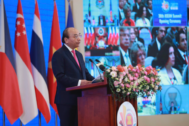
US - Southeast Asia
May — August 2020Diplomatic Doldrums: ASEAN Loses Momentum in the Pandemic as Security Tensions Rise
As Southeast Asia struggles to gain traction in the COVID-19 pandemic and address the economic damage it has imposed, leaders are hobbled by travel restrictions and other conditions that make forging a regional approach to the virus more difficult. Although most states have launched partial and cautious reopening strategies, most intergovernmental business is still conducted online. This will remain the case for the rest of 2020, given widespread fears of a second surge of the coronavirus. In the meantime, several leaders face political challenges as their domestic populations struggle under the worst recession in years. Diplomatic traffic is ordinarily busy in the summer in Southeast Asia, but this year the Shangri-la Dialogue in Singapore was cancelled, the ASEAN Summit forced to go online, and the ASEAN Regional Forum (ARF) pushed into the early fall, also to be conducted by video. Security tensions were not held in abeyance by COVID, and may have been exacerbated by it. China’s attempts to disrupt oil and gas explorations of the Southeast Asian claimants in the South China Sea evoked an unusually strong statement from Washington in mid-July; the reactions of the Southeast Asian claimants, particularly Vietnam and the Philippines, were a litmus test in part of their confidence in the US to ameliorate the situation. A security crisis of a different sort continued as the Mekong River entered its second year of drought, raising concerns about upstream dams controlled by China.
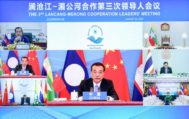
China - Southeast Asia
May — August 2020China Faces Stronger US Opposition in South China Sea
Beijing responded methodically to a major escalation in US challenges to Chinese expansionism in the South China Sea. Officials from Xi Jinping on down reached out to Southeast Asian countries with emphasis on growing economic relations and cooperation in countering COVID-19. Top-level officials generally eschewed public criticism of the United States on South China Sea issues, while government ministries and official and unofficial media used sometimes tough language in criticizing Washington. Overall, Beijing registered satisfaction that ASEAN adopted a neutral stance and most other states showed little sign of leaning toward the US against China.

China - Taiwan
May — August 2020Taiwan Navigates US-China Tensions as it Manages the Effects of COVID-19
Simmering tensions across the Taiwan Strait were a concern in May at the World Health Assembly meeting, along with President Tsai’s second inauguration, China’s National People’s Congress, and the 15th anniversary of the Anti-Secession Law. The beginning of Tsai’s second term was defined by Taiwan’s success in overcoming the health and economic impacts of COVID-19. Taiwan failed to win a seat at the World Health Assembly, but won unusually broad and public support from Washington and other typically silent partners. Taiwan offered assistance to victims of the Beijing’s National Security Law for Hong Kong, prompting Beijing to warn of Taiwan’s “black hand.” Taiwan’s ties with the US were showcased by the August visit of Secretary of Health and Human Services Alex Azar to Taipei.
Elsewhere, seeking to jumpstart negotiations on a bilateral trade agreement with the US, Tsai announced that Taiwan will allow imports of US pork and beef. The Nationalist Party’s recent presidential candidate Han Kuo-yu was recalled as Kaohsiung mayor and replaced by DPP candidate Chen Chi-mai. Meanwhile, the new KMT leadership’s initiative to sever ties to the “1992 Consensus” provoked generational dissension and a sharp warning from Beijing. Lee Teng-hui was mourned at his death as a democratic hero.

North Korea - South Korea
May — August 2020A Tempestuous Summer
This was a tempestuous summer on the Korean Peninsula in more ways than one. Relations between the two Koreas, already bad, reached a new nadir in June. Claiming to be suddenly furious about defector activists sending propaganda via balloon across the Demilitarized Zone (DMZ), North Korea issued ever more violent threats against the South. These culminated in the symbolic but extreme act of physically blowing up the (by then unoccupied) joint liaison office in Kaesong, just north of the DMZ, on June 16. Moon Jae-in’s government deplored that and other aggressive Northern acts, like opening dams to send floodwaters downstream into the South without warning. Yet its tone was more pained than sharp, and Moon remained oddly emollient toward Pyongyang overall. In July he named a new minister of unification (MOU) in Lee In-young, who had allegedly been pro-North in his student days, as well as reshuffling three other top security posts. Although the new appointees were all even more strongly pro-engagement than their predecessors, North Korea showed little sign of being impressed.
No doubt Kim Jong Un was preoccupied elsewhere, by tempests of a more literal kind. After the longest summer monsoon season ever recorded, the peninsula was buffeted by back-to-back typhoons in August and early September. Both Koreas suffered—separately, since Kim refused all aid from the South (or anyone), citing COVID-19 concerns, just as he had rebuffed Moon’s offer to help regarding the virus itself. With North Korea turning inward and focused on reconstruction—a new Party Congress, set for January, looks like an attempt at a fresh start—and the clock starting to tick on Moon’s term of office which must end in May 2022, the chances of inter-Korean cooperation reviving any time soon seem sadly small.
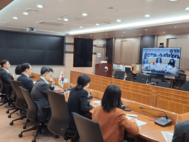
China - Korea
May — August 2020US-China Rivalry Divides the Two Koreas
The Korean Peninsula appears divided in what some analysts call a “new cold war” as US-China tensions escalate over issues ranging from COVID-19 to Hong Kong. Washington’s new China strategy prompted Pyongyang to voice its alignment with China while heightening Seoul’s dilemma of choosing sides. As the North Korean economy suffered the combined effects of ongoing sanctions, the global pandemic, and severe weather, a leaked UN report in August sharpened international criticism of China’s sanctions enforcement. The region’s current domestic political priorities reinforce Beijing, Seoul, and Washington’s trilemma over alternative approaches to DPRK denuclearization.
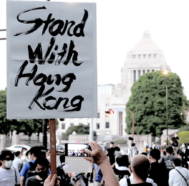
Japan - China
May — August 2020The Velvet Gloves Fray…Slightly
Major concern in this period centered around the future of Sino-Japanese relations in the post-Abe era, with most analysts predicting that there would be little change. China’s impressive, though credit-fueled, rebound from the coronavirus pandemic as Japan’s economy sharply contracted indicates that Tokyo will seek to maximize trade with the PRC.
Xi Jinping’s long-awaited state visit to Japan is on indefinite hold, with concern for the pandemic a convenient explanation for underlying multiparty opposition due to Beijing’s assertive actions in contested areas and its repressive measures in Hong Kong and Xinjiang. Differences of opinion remain on the wording of a so-called 4th Sino-Japanese Communique that is much desired by Beijing.
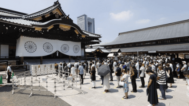
Japan - Korea
May — August 2020History, Trade, and Distrust
“Cold economics, cold politics” has become the new normal in Japan-South Korea relations. Instead of the practical stability that they maintained in the first months of this year, latent tension became the defining force as Seoul and Tokyo followed through their earlier decisions made in 2018 and 2019. The twin decisions—South Korea’s Supreme Court ruling on forced labor during Japan’s occupation of the Korean Peninsula and Japan’s export restrictions on key materials used for South Korea’s electronics industry—planted the seeds of discord and deterioration of bilateral ties during the summer months of 2020. In June, following the 2018 Supreme Court’s order, the Daegu District Court released a public notice to Nippon Steel, formerly known as Sumitomo Metal, a move to seize and liquidate the local assets of the company. In response to Japan’s imposition of export controls in 2019, South Korea filed a complaint with the World Trade Organization. This downward spiral will likely continue for the remainder of the year unless South Korea and Japan take decisive action to address these disputes. On the North Korea front, Japan’s newly published Defense of Japan 2020 assessed North Korea’s nuclear and missile capabilities as posing greater threats to Japanese national security than previous years.
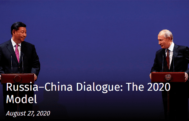
China - Russia
May — August 2020Age of Triangular Politicking
While the coronavirus raged throughout summer 2020, China and Russia found themselves entangled in two separate triangular dynamics with the US and India. China faced off with India along the long mountainous border, culminating in the June 15 deadly brawls. Meanwhile, the “whole-of-government approach” of the Trump administration against China led to a near-freefall in bilateral relations, featuring the highly ideologized, militarized connotations of the Cold War (1947-1991). In both cases, China’s strategic space was increasingly constrained.
Russia, however, found itself in a curiously pivotal position within the two geopolitical triangles: an “innocent” bystander in the Beijing-New Delhi-Moscow trio and a useful, delicate balancer in the Washington-Beijing duel. Between its strategic partner (China) and persistent yet unrequited courter (the Trump administration), Russia carefully played its cards from a position of strategic weakness. By end of summer, the US-China-Russia triangle made its way into the US 2020 presidential elections as presidential candidates played the “Russia” and “China” cards. No matter who wins the 2020 US election, the stakes are high for China and Russia.
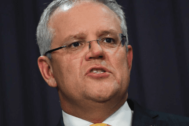
Australia-US/East Asia
September 2019 — August 2020Coronavirus, China and the US New Normal
Challenged by COVID-19 and China, Australia confronts deteriorating strategic prospects and its first economic recession in nearly 30 years. The pandemic has worsened strained relations between Australia and China. Canberra’s call for an inquiry into the origins of COVID-19 was attacked by Beijing as a betrayal and Chinese trade retaliation has followed. Even before the pandemic hit, Australia talked of a “new normal” with China of “enduring differences.” Whatever the US election result, the phrase “new normal” is also being applied to changes wrought by President Trump. The US alliance is hugged anew as Canberra abandons a central strategic tenet held for 50 years—the idea that Australia would have 10 years warning of any direct military threat.